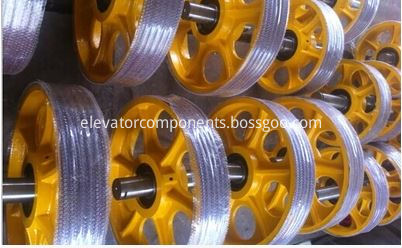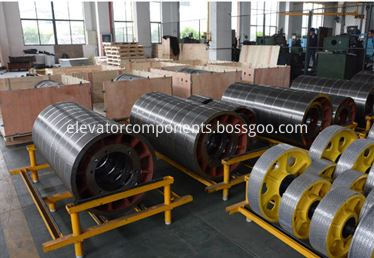Soil salt damage in a few years, more and more number of occurrences, the situation is getting worse. In the end, what is the soil salt damage , and how to solve it specifically ?  
1. What is soil salt damage?
Soil salinity can also be called soil salinization. It is the process in which the salt in the deep water of the soil rises to the surface with the capillary water, and the salt accumulates in the surface soil after the water evaporates. These salts in the surface soil include sulfates, chlorides, carbonates and bicarbonates of sodium, potassium, calcium, magnesium and the like. When the salt content in the surface soil is too high or exceeds the content that can be tolerated by vegetables, the growth is hindered and the damage of soil salinization is manifested.
In the process of vegetable cultivation, we find that the surface of the dried soil in the planting row and on both sides is often white or red, and disappears after watering. As the soil gradually dries, red and white frost will appear again. Once this happens, the total salt content of the soil is already high and the soil has a tendency to salinize.
Second, why is the soil in the greenhouse susceptible to soil salt damage?
First: a large investment in chemical fertilizers
Some vegetable farmers believe that if they always keep a large investment, they will have a large output. The proportion of various substances in the agglomerate structure of the soil is certain. The large amount of fertilizer inputs makes the proportion of mineral elements in the soil much higher than other substances, which is not conducive to the formation of agglomerate structure. The granule structure is less, the soil porosity is less, the soil permeability is worse, and it is more likely to cause salinization of the soil slab in the greenhouse.
Second: the ratio of fertilizer is unreasonable
In vegetable cultivation, three large elements of nitrogen, phosphorus and potassium are the main components of yield formation. However, in practical application, some vegetable farmers believe that more nitrogen, phosphorus and potassium can increase vegetable yield, neglecting medium and trace amounts. Application of the elements. Moreover, the use ratio of organic fertilizer and chemical fertilizer is imbalanced, resulting in a low utilization rate of fertilizer input. In the current situation where the amount of chemical fertilizer is already high, the use of fresh chicken manure with high nitrogen content, rather than other manure with low mineral content and high organic matter, can also cause soil salinization.
Third: the environment inside the shed is special
The greenhouse is covered with plastic film all year round, and there is no rainfall for leaching for a long time. The excess mineral elements in the soil can not be lost with rainwater, nor can it be leached into the deep layer of soil with rainwater, but remain in the 20 cm soil layer. . The greenhouse is in a high temperature state for a long time, and the water evaporation is large. The salt in the deep soil is promoted by the soil capillary, and rises to the soil surface with the soil moisture. As a result of these two effects, the soil salt content of the surface layer is getting larger and larger, and when the salt is accumulated to a certain extent, it will cause harm to the crop.
Fourth: watering too often
The greenhouse itself is a closed or semi-enclosed small environment. Relatively speaking, watering and topdressing are very frequent all year round. The high soil moisture in the surface layer will seriously damage the soil aggregate structure, which will reduce the macroporosity, reduce the soil permeability and cause the knot, and make the soil The surface salt does not penetrate deep into the soil.
3. What are the adverse effects of soil salt damage on vegetable cultivation?
   When the soil total salt content is too high, salinization or even salt damage occurs, the growth of vegetables will be abnormal, and various adverse symptoms will appear. And we can only see the difference from the vegetables. In fact, when the soil appears salinized, it not only affects the growth of vegetables, but also destroys the physical and chemical properties of the soil.
Not conducive to the formation of agglomerate structure. The aggregate structure requires the combination of humus and mineral elements in a certain proportion. When the mineral elements are much higher than the quantity of humus, the aggregate structure is not easy to form. Although the mineral content of the soil is high, the fertility state is very low.
Make the soil more compact. When the agglomerate structure in the soil is reduced, the ventilating water permeability of the soil becomes worse, the soil becomes sticky when it encounters water, and a large number of cracks appear on the surface after drying. Roots stretch very slowly in such soils, and soils that are impervious to water are more likely to cause root damage.
Soil microbes are reduced. After the salinization of the soil, the organic matter is reduced, and the soil microorganisms lose the food that survives and multiplies, and the amount thereof is greatly reduced. The use of organic fertilizers in soils with low microbes is also very slow.
The antagonism between the elements is more serious. Excessive mineral elements in the soil, especially the use of a large number of elements, will cause more serious antagonism of medium and trace elements, making trace elements such as calcium, magnesium, iron, zinc and boron more difficult to be absorbed, and vegetables appear to be deficient. More and more situations.
Inhibit the development of vegetable roots. Planting vegetables in the soil where salt damage occurs, the plants generally show short stature, stunting, and thick leaves. When severe, they begin to dry or brown from the leaves, turning inward or outward, and the roots turn brown and die. Take cucumber as an example: when the soil total salt content is too high and the soil solution concentration is too large, the root system can not absorb water normally, the plant shows noon wilting, and returns to normal at night; when the soil is salinized, it is difficult for cucumber seedlings to colonize. It is difficult to survive and stand; the leaves are dark green, the leaves have wavy yellow marks on the edges, or the leaves are rolled outwards, which are umbrella-like and brittle; in severe cases, the leaves begin to lose water and wilting, dry and brown, and brown at the roots. Changed, withered, the whole plant withered and died; severely appeared flower topping, fruit bitterness and so on.
4. What are the measures to solve the soil salt damage?
Measure 1: Soil deep ploughing and straw returning
The soil layer with serious salt damage is characterized by compactness and poor gas permeability. In actual production, the soil layer structure can be broken by deep-turning the soil, and the topsoil with higher total salt content can be turned to the bottom layer to reduce soil salt. The degree of staining. At the time of each change , the application of 4000 kg of farmyard manure with high organic matter content can increase soil organic matter content and improve soil physical and chemical properties. Field crop straw is used in greenhouse soils, which can adsorb and utilize mineral elements in the soil during the decomposing process, and also increase soil organic matter and improve soil permeability.
Measure 2: Supplementing bacterial fertilizer
The biological bacterial fertilizer is rich in a large number of soil beneficial bacteria. In addition to preventing soil-borne diseases by "bacterial inhibition", the beneficial bacteria in the biological bacterial fertilizer can also play a role in nitrogen fixation, phosphorus dissolution, potassium dissolution, etc., and reduce salt damage. The role of bacterial fertilizer application is more, can be applied, acupoint application, flushing. The three-bar compound microbial agent has a good effect on increasing the number of soil flora, improving soil structure and improving soil fertilizer efficiency.
Measure 3: Reduce fertilizer use and rational fertilization
Â
Fertilizer is the main source of soil salinization. As long as the dosage is reduced and the fertilizer is applied reasonably, soil salinization can be prevented from the “sourceâ€. Reducing the amount does not mean not applying it, but applying it scientifically and reasonably. The application of chemical fertilizers should be based on the results of soil nutrient determination in greenhouses and the fertilizer requirements of different crops. Based on the principle of balanced fertilization, the principle of lack of sputum and deficiency, and how much to make up.
Measure four: water pressure salt
As the saying goes, "Salt goes with the water." We can "take away" the high-concentration salt ions in the tillage layer by means of water-pressure salt and water capillary through the measures of flooding. It is recommended that after the vegetable is pulled out of the garden, the high temperature suffocating shed will be carried out together, that is, the first time to hit the ground, and then the large irrigation, suffocating shed, should be more than half a month. Or remove the shed film during the summer break period and use the frequent rain to wash the salt in the soil. However, you need to pay attention to protect the shed wall.
In addition, in the production season, the method of watering the film under the film to reduce the evaporation rate of the soil surface can slow down the rate of deep salt rise in the soil.
Â
Â
Â
We carry high quality Elevator Cast Iron Pulley as below
Elevator Guiding Pulley
Elevator Diverting Pulley
Elevator Deflecting Sheave
Elevator Deflector Sheave
Elevator Suspension Sheave
Elevator Suspension Pulley
Elevator Diversion Sheave
Elevator Crosshead Sheave
Elevator Car Top Pulley
Elevator Car Bottom Pulley
Elevator Cast Iron Pulley
Elevator Casting Pulley
Elevator Counterweight Sheave
Elevator Counterweight Pulley
High Speed Elevator Double Wrap Pulley
for all major elevator and escalator brands as below
OTIS Elevators, ThyssenKrupp Elevators, Schindler Elevators, KONE Elevators, Mitsubishi Elevators, Fujitec Elevators, Hitachi Elevators, Toshiba Elevators, Fuji Elevators, Express Elevators, Sigma Elevators, LG Elevators, Hyundai Elevators, BLT Elevators, CANNY Elevators, SJEC Elevators, KOYO Elevators, IFE Elevators, Thyssen Elevators, GiantKONE Elevators, XJ Schindler Elevators, Xizi OTIS Elevators, Shanghai Mitsubishi Elevators, GUANGRI Elevators


Elevator Suspension Pulley, Elevator Diverting Pulley, Elevator Deflecting Sheave, Elevator Deflector Sheave, Elevator Guiding Pulley, Elevator Car Top Pulley
CEP Elevator Products ( China ) Co., Ltd. , https://www.zjsmartcommercialescalators.com